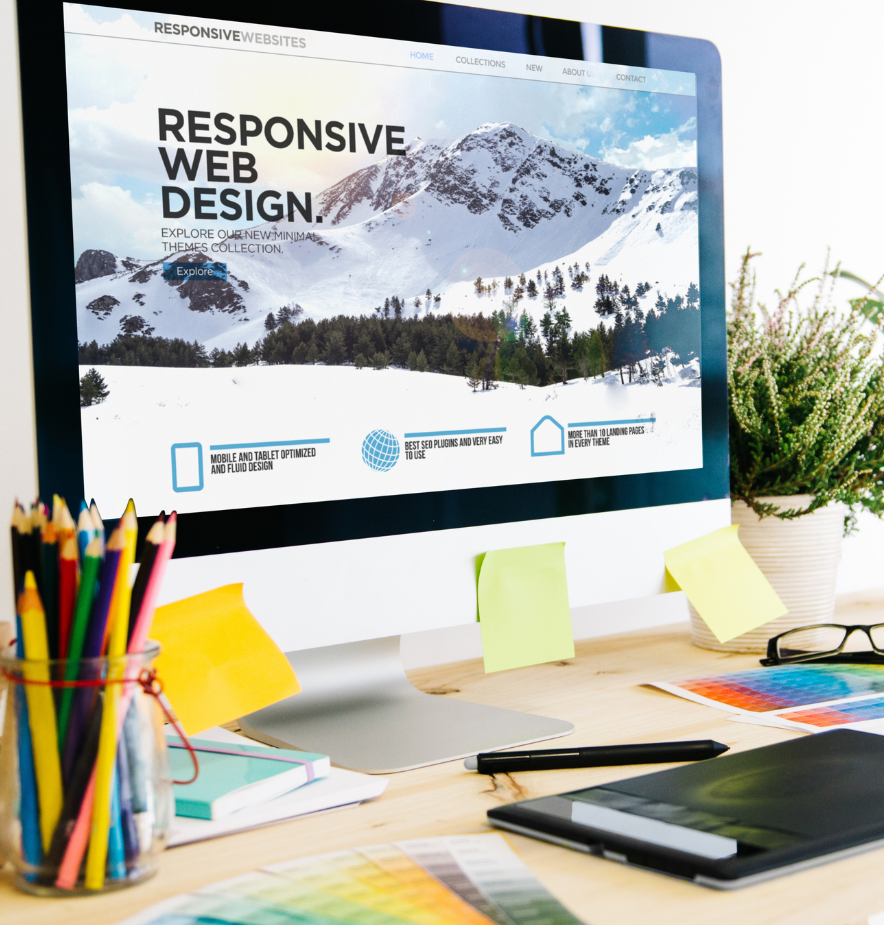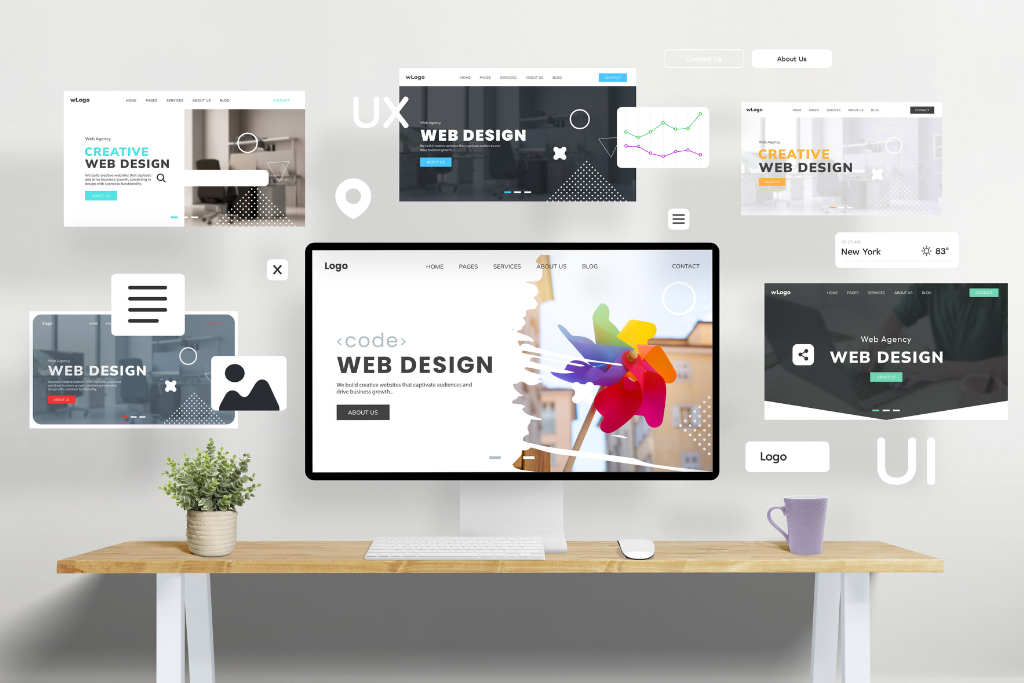In the ever-evolving world of web design, staying ahead of the curve isn’t just about aesthetics—it’s about delivering an outstanding user experience that speaks to modern audiences. At Cirrius Business, we’re always exploring new ways to blend style with performance. Below are ten design trends we see gaining momentum in 2025, along with tips for putting them into practice without compromising site speed or usability.
Immersive 3D Elements
What It Is:
Websites are moving beyond flat graphics. From product showcases that spin in 3D to subtle layered effects, immersive 3D is cropping up everywhere.
Why It Matters:
These visuals capture attention and make brands more memorable. They’re especially useful for e-commerce product previews and explainer graphics, giving users a dynamic, hands-on feel.
How to Implement:
- Use WebGL or frameworks like Three.js for realistic 3D experiences.
- Keep it light: Optimize 3D models, compress textures, and consider fallback options for slower connections.
- Incorporate subtle movement or hover effects to avoid overwhelming users.


Dark Mode & Themed Interfaces
What It Is:
Dark mode options and themed interfaces allow users to toggle between light and dark backgrounds—or even choose from a palette of UI themes.
Why It Matters:
Dark mode can reduce eye strain, prolong battery life on mobile devices, and give your site a sleek, modern look. Themed interfaces deliver a more personalized experience.
How to Implement:
- Give users a toggle to switch between themes.
- Use CSS variables for color palettes, so updating styles is quick and efficient.
- Test for contrast issues: text must remain legible in dark mode.
Typography That Makes a Statement
What It Is:
Eye-catching, oversized, and custom fonts—often combined with animated text effects—are taking center stage in 2025. Bold typography can serve as the focal point of a minimalist design.
Why It Matters:
Properly chosen fonts convey brand personality, set the tone for the content, and help users consume information quickly.
How to Implement:
- Pair big headlines with ample white space for contrast.
- Keep load times low with optimized font files or system fonts when possible.
- Use CSS animations or transitions to highlight key messages (but don’t go overboard)

Micro-Interactions & Subtle Animation
What It Is:
Micro-interactions are small, often playful animations that respond to user actions—like a button ripple when clicked or an icon bounce upon hover.
Why It Matters:
They give websites a more “alive” and responsive feel, improving the user’s overall impression. Carefully used, they guide attention and provide instant feedback.
How to Implement:
- Use lightweight CSS animations or JavaScript libraries like GSAP for more complex motion.
- Keep duration short – micro-interactions shouldn’t slow down navigation.
- Ensure accessibility by accommodating keyboard navigation and avoiding motion triggers for users with motion sensitivity.
Artificial Intelligence & Personalization
What It Is:
AI-driven websites that personalize content based on user preferences, browsing history, or real-time interactions. Think of recommended products or content modules that adapt to each visitor.
Why It Matters:
Personalization reduces bounce rates and increases engagement by delivering relevant content.
How to Implement:
- Integrate AI tools or machine learning APIs that track user behavior.
- Segment visitors by demographics or interests to present targeted features or offers.
- Monitor performance – personalized elements should update quickly to avoid lag.

Voice User Interface (VUI) Considerations
What It Is:
Designing for voice search and commands. Even if your site doesn’t have a voice component, optimizing content for voice interactions (e.g., via schema markup) is becoming critical.
Why It Matters:
With more users relying on smart assistants and voice search, websites that cater to voice queries gain an SEO edge.
How to Implement:
- Use structured data (schema) to help search engines understand your content contextually.
- Include conversational language in your FAQs and content for better voice-search matching.
- Consider voice-specific design: minimal screens, large tap targets, and easily parsed text.
Brutalist-Inspired Minimalism
What It Is:
Raw, edgy designs inspired by modernist architecture and minimalistic aesthetics—often characterized by stark backgrounds, geometric shapes, and a clear hierarchy of content.
Why It Matters:
Brutalism stands out because it breaks conventional design patterns, appealing to audiences looking for something unique.
How to Implement:
- Emphasize bold typography and a simple color palette.
- Keep the layout grid straightforward and consistent across pages.
- Use restraint: a true Brutalist site can feel harsh if you overdo it, so balance is key.
Data Visualization & Interactive Infographics
What It Is:
Interactive charts, graphs, and maps embedded directly on your site. These can be powered by JavaScript libraries like D3.js or Chart.js.
Why It Matters:
Well-designed data visualizations convey complex information quickly and keep users engaged. Interactive elements let visitors explore data at their own pace.
How to Implement:
- Focus on a clear data story: make sure the charts answer key questions.
- Mind performance: large datasets require efficient code and lazy-loading if possible.
- Offer fallback versions (e.g., static images) in case JavaScript fails or user devices are slow.
Custom Illustrations & Branded Icons
What It Is:
Hand-drawn or uniquely crafted illustrations that reflect the brand’s personality. Custom icons also set a site apart from the cookie-cutter look of stock icon sets.
Why It Matters:
Unique visuals help tell a story and add a personal touch to otherwise generic layouts. They make your brand more recognizable.
How to Implement:
- Collaborate with an illustrator or designer for a consistent style throughout the site.
- Keep the file sizes small—vector-based SVGs often work best.
- Maintain color consistency with your overall brand guidelines.

Sustainability and Eco-Friendly Design
What It Is:
Designing websites that emphasize low energy consumption through efficient coding, minimal resource use, and hosting on eco-friendly servers.
Why It Matters:
More organizations and consumers are becoming conscious of digital carbon footprints. A lean, energy-efficient site aligns with corporate social responsibility.
How to Implement:
- Optimize images and code to reduce data transfer.
- Choose hosting providers who invest in renewable energy or offset carbon emissions.
- Emphasize simple, streamlined navigation—fewer page loads mean less resource usage.
Putting It All Together
As we move further into 2025, web design will continue merging creativity with functionality. Integrating these trends into your digital strategy can yield sites that both capture attention and deliver seamless user experiences. However, execution matters. High-quality design is more than slapping on flashy features—it’s about crafting a cohesive, intuitive journey that aligns with your brand’s goals.
Final Tips for Implementation
- Stay Performance-Focused:
Even the coolest 3D models won’t impress anyone if your site takes ages to load. Always monitor performance metrics using tools like PageSpeed Insights and GTmetrix. - Test, Test, Test:
Check how your design appears on various screen sizes and devices. Consider accessibility guidelines to ensure that everyone—including users with disabilities—can interact with your site comfortably. - Adopt a Phased Rollout:
If you’re unsure about adopting a trend fully, test it on a single page or a small section of your site. Gather feedback and metrics before expanding. - Partner with Professionals:
Whether you need help building 3D elements, ensuring accessibility, or refining your brand illustrations, working with an experienced agency (like Cirrius Business) ensures your project stays on track.
Ready to Revamp Your Website?
At Cirrius Business, we specialize in designing and building modern websites that balance aesthetics and performance. If you’re intrigued by any of these design trends and want to explore how they can elevate your online presence, get in touch with our team. We’d love to help you create a website that stands out in 2025 and beyond.
Interested in learning more? Contact us for a free consultation or to explore our design packages.



